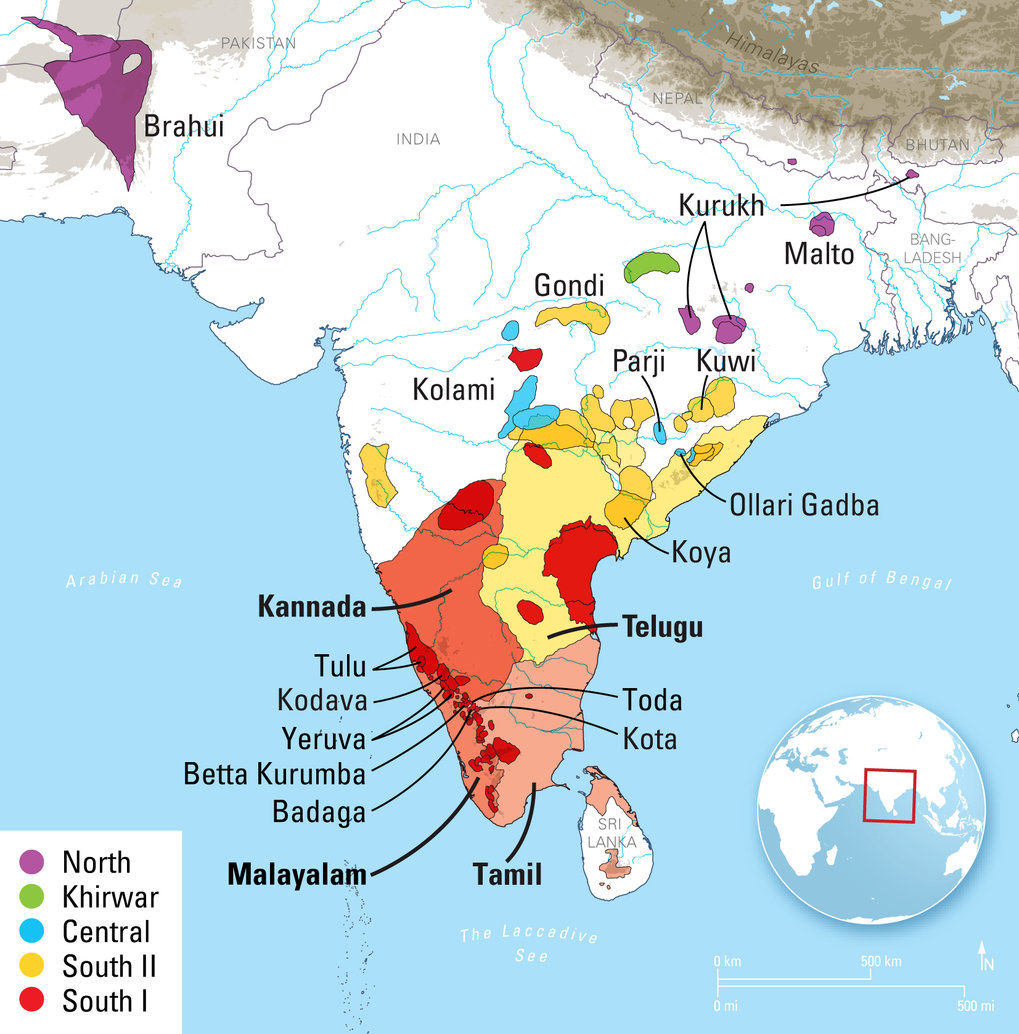Languages attested in writing more than 950 years ago shown in bold.
A new linguistic analysis argues that the Dravidian languages arose ca. 2500 BCE, the same time as the South Indian Neolithic Revolution. This is one very plausible date, although other studies have argued for a more recent origin on linguistic grounds (and one study argued, implausibly, for a 13000 years BP date). If this is the date of origin it pre-dates the arrival of Indo-Europeans in India by 500-1000 years, and precedes the arrival of Indo-Europeans in the Dravidian linguistic area by a bit longer than that.
The study is an honest effort, but not necessarily terribly reliable as any study is only as good as its assumptions and methods, which aren't terribly convincing, and no serious effort is made in the paper to validate the assumptions they use or even to clearly describe those assumptions. The methods used are fairly reliable for creating a branching phylogeny of the language family (something that has never been in serious doubt), but is less reliable for purposes of estimating time depth.
For example, the analysis puts all Dravidian languages on an equal footing based upon a Swaedesh vocabulary list, but really, to do it right, they should be limiting themselves to what can be determined from the historic content of the four Dravidian languages that are attested earliest. And, they should be pretty much ignoring North Dravidian languages for which there is a strong case to be made that they didn't arise until about 1000 CE, entirely.
For example, the analysis puts all Dravidian languages on an equal footing based upon a Swaedesh vocabulary list, but really, to do it right, they should be limiting themselves to what can be determined from the historic content of the four Dravidian languages that are attested earliest. And, they should be pretty much ignoring North Dravidian languages for which there is a strong case to be made that they didn't arise until about 1000 CE, entirely.
Their own error bars are 1000 BCE to 4500 BCE, with the archaeology of the South Indian Neolithic used to support a mid-range value. The most reliable youngest possible date comes from Dravidian loan words in the Rig Veda:
There is clear evidence of Dravidian loanwords into Old-Indo-Aryan (1750–250 BCE) dating to the middle Rigvedic period (ca 1200 BCE) in a source area that might have been Sindh, contemporary Southwest Pakistan [6], [8, pp. 69ff, 88]. Southworth [8, p. 64] proposes Sindh, Gujarat and eastern Maharashtra as areas where Dravidian would have been spoken at earlier stages.Thus a range of perhaps 1500 BCE to 2500 BCE is quite plausible.
But, many linguists have doubted that the amount of linguistic diversity really supports a 4500 years time depth, which could be consistent with a bottleneck effect of diversification from surviving dialects after the language family temporarily went extinct in a large part of its range. Indeed, it is very likely that the particular dialect of Dravidian that was the source of the Rig Vedic substrate is extinct.
The study is: Kolipakam et al. A Bayesian phylogenetic study of the Dravidian language family. Royal Society Open Science (2018).

No comments:
Post a Comment